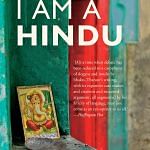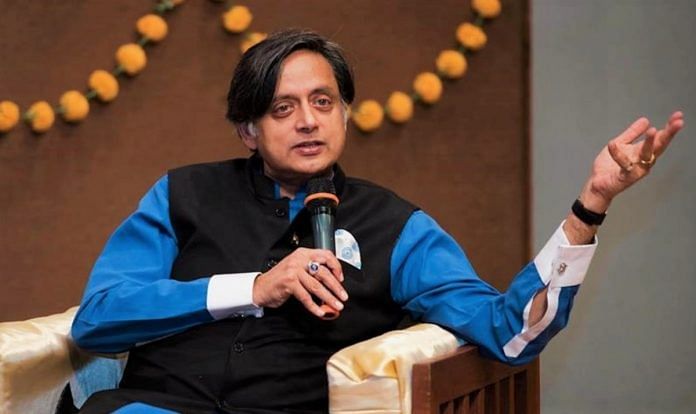In this excerpt from Congress MP Shashi Tharoor’s new book, ‘Why I Am a Hindu’, he talks about how the plural expressions of India’s many identities are being stifled by extremist segments of its Hindu majority.
At almost the same time as the Taj controversy came one over a film on the Rajput queen Padmavati, who is said to have immolated herself, together with 16,000 other Rajput women, rather than be captured alive by the invading Delhi Sultan Alauddin Khilji. The historicity of the incident is somewhat in doubt no contemporary account of Khilji’s attack on Chittorgarh, including by historians accompanying his forces, mentions the queen. But Padmavati became legend more than two centuries later, when the Sufi mystic poet Malik Mohammed Jayasi devoted his lyrical epic Padmavat to her story. It has been suggested that Jayasi did not intend his tale to be taken literally, and that he had chosen Khilji’s attack on Chittor because its name included the word ‘chit’ (consciousness); his poem is said to have been an allegory for the union of mind and soul, under attack from external forces, with the man-woman story a standard trope of the Persian mystic poetry tradition.
But literature, once published, acquires a life of its own. The tale was picked up and retold with enthusiasm—by Bengali bards, Rajasthani folk-tellers, and even the English Colonel Tod, who included Padmavati’s tale in his compilation, Annals and Antiquities of Rajputana. In countless retellings, Padmavati was soon deified: she became the symbol of Rajput female honour and purity, nobly resisting the lustful Muslim, her self-immolation (‘jauhar’) the epitome of sacrificial Hindu womanhood. The reputed site of her suicide became a tourist attraction. The legend grew, with one colourful figure, the head of a Rajput organization, the Karni Sena, claiming to be directly descended from her. (When confronted with the theory that she was fictional, he replied, ‘I am 37th in her direct line of descent. Am I a ghost?’)
The controversy confirmed once again that to some Hindus, the difference between historical fact and cultural myth does not matter; what is remembered and believed is as important as what is verifiable. No less an ardent secularist than India’s first Prime Minister, Jawaharlal Nehru, had written seven decades earlier: ‘Facts and fiction are so interwoven together as to be inseparable, and this amalgam becomes an imagined history, which may not tell us exactly what happened but does tell us something equally important what people believed had taken place, what they thought their heroic ancestors were capable of, and what ideals inspired them… Thus, this imagined history, mixture of fact and fiction, or sometimes only fiction, becomes symbolically true and tells us of the minds and hearts and purposes of the people…’ This, in a nutshell, explained Rajput passions over the depiction of a cultural heroine who may or may not have existed.
With so much riding on Padmavati’s image, the Bollywood film-maker who set out to make a film of her story found himself treading unwittingly on the newly-roused passions about the past. The Karni Sena trashed his film set, at Jaigarh Fort in Jaipur, and disrupted further shooting in a new (less ‘authentic’) location at Kolhapur, accusing him of filming a love scene between the Hindu queen and the Muslim invader. Though he denied this, the Rajput community then successfully delayed the release of the film, claiming that it ‘distorted history’; the fact that they had not actually seen it before making this claim was apparently irrelevant to the protestors (as well as to four BJP chief ministers, who pre-emptively announced a ban on screening the yet-unreleased film in their states).
‘Taking offence’ is the name of the game these days; ‘hurting the sentiments of a community’ is the name of the crime. The old Hindu boasts of expansive tolerance are wearing thin these days. (But the film-maker should well have been warned by the experience of another film a decade ago, this time unconnected to any religious community. The threat of protests and possible prosecution had caused a Bollywood star and producer to retitle a film originally named Billoo Barber without the second word, because the hairdressers’ community absurdly protested that the term ‘barber’ was an insult to their profession.)
It may not seem to matter very much what some lumpen elements think of a Bollywood film, or of Valentine’s Day, for that matter. But it is precisely this kind of narrow-mindedness that also led to the notorious ‘pulping’ of Wendy Doniger’s erudite studies of Hinduism. If these intolerant bullies are allowed to get away with their lawless acts of intolerance and intimidation, we are allowing them to do violence to something profoundly vital to our survival as a civilization.
Pluralist and democratic India must, by definition, tolerate plural expressions of its many identities. To allow the self-appointed arbiters of Bharatiya sanskriti to impose their hypocrisy and double standards on the rest of us is to permit them to define Indianness down until it ceases to be Indian.
 Shashi Tharoor’s latest book ‘Why I Am A Hindu’ has been published by Aleph Book Company. Excerpted with permission from Aleph.
Shashi Tharoor’s latest book ‘Why I Am A Hindu’ has been published by Aleph Book Company. Excerpted with permission from Aleph.




Broadness of Hinduism was trampled through out history due to the upkeep of a cancer called caste.
Tharoor is a Hindu because he had no misfortunes of caste atrocities to suffer.
Instead of making all Hindus equal, our great leaders including Nehru joined the tramplers of Hindus.
We have religion coming out of our ears now. It matters a jot whether the Karni Sena, or anyone else, is upholding or debasing the tenets of any particular religion. Its members are breaking the law, and they are also violating the canons of ordinary decency by which all civilised societies live in peace. We can judge their behaviour without bringing religion into it. And we don’t have to respond by saying that I am a vegetarian, do not eat beef or intend to see Padmavati. Let whataboutery be buried deep in our public discourse.